If I were to describe my career, I’d say it’s been a jungle gym, not a ladder.
I’ve moved from film and television to graphic design and now to marketing leadership.
But the one thread connecting it all is my passion for storytelling. At its heart, marketing is about telling a compelling story.
And authenticity is also a huge part of that.
Today, the story we’re telling at interVal is about democratizing business valuation to help business owners grow their value. It’s a cool story to tell, and it reinforces a belief I hold dear: the best brand stories are told by real, authentic people. That’s the crux of effective thought leadership.
It’s not reserved for executives. It’s a powerful tool that everyone in your organization can use.
This article will detail how to democratize thought leadership within your organization.
We'll cover:
- The essential link between authenticity and B2B trust.
- How to empower every employee to become a thought leader.
- The biggest mistakes companies make when launching a program.
- The role of human authenticity in the age of AI.
- Actionable steps for starting your company's thought leadership program.
What is thought leadership, really?
From my perspective, thought leadership means being authentic about the story you're in right now. In a business context, it’s about sharing your expertise and unique point of view. Everyone has expertise in something, and when you can show your authority in that space, it has a real marketing impact.
It’s about having an authentic voice that people lean towards. They might not always agree, but they’re listening.
When you resonate with an audience, you build a connection that goes beyond a simple transaction.
Why thought leadership is critical for B2B
Authenticity is especially important in B2B.
We often think of it as business-to-business, but at the end of the day, a human is signing that contract. It’s a human-to-human interaction, which means we have to build trust.
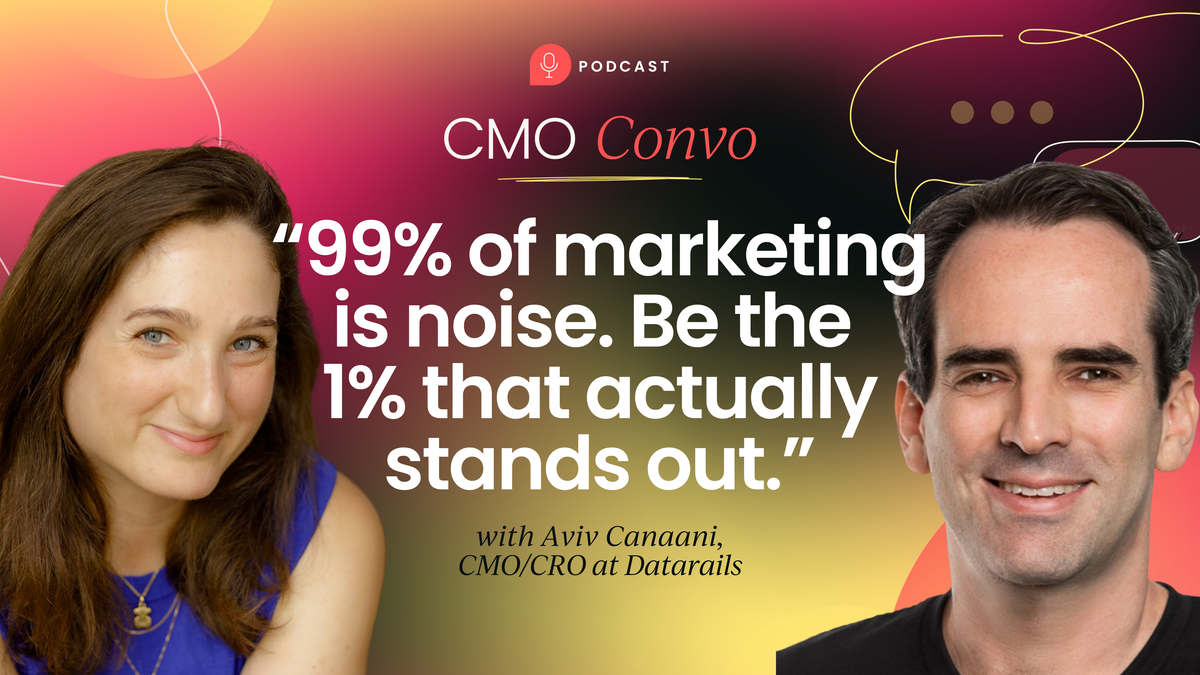
In fact, we have to build more trust in B2B because the dollar figures are much larger, especially with enterprise deals. You aren't just buying a 99-cent widget online. You're spending huge amounts of money, and you need to trust that the people on the other side will deliver on their promises.
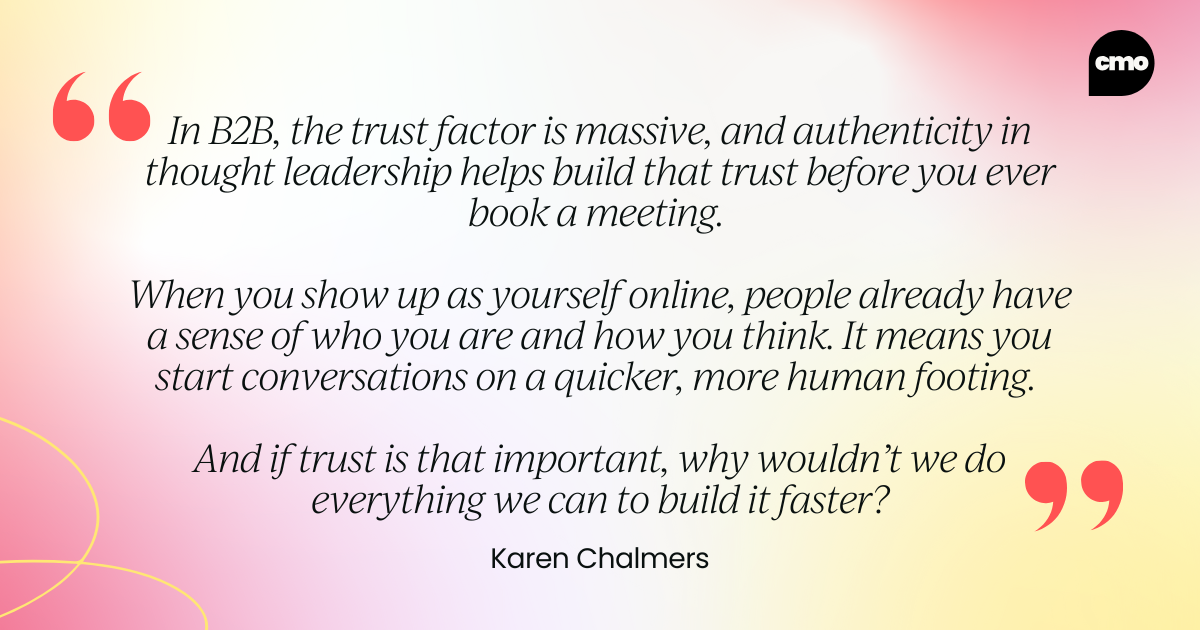
Authentic thought leadership helps build that trust before you even book a meeting. When we show up as ourselves online, people get to know who we are. They understand our perspective, which allows us to get to trust faster and start conversations on a much stronger footing.
The case for authenticity in the age of AI
Thought leadership should absolutely have its place in your strategy, but especially nowadays. The reason being that, with the rise of AI, our human voice can shine even more.
This doesn't mean we can't use AI to help us. In fact, these tools can make us more productive. I often use AI to polish my writing, but I never let it do all the work. The key is to teach the AI your unique voice by giving it examples of your authentic writing.
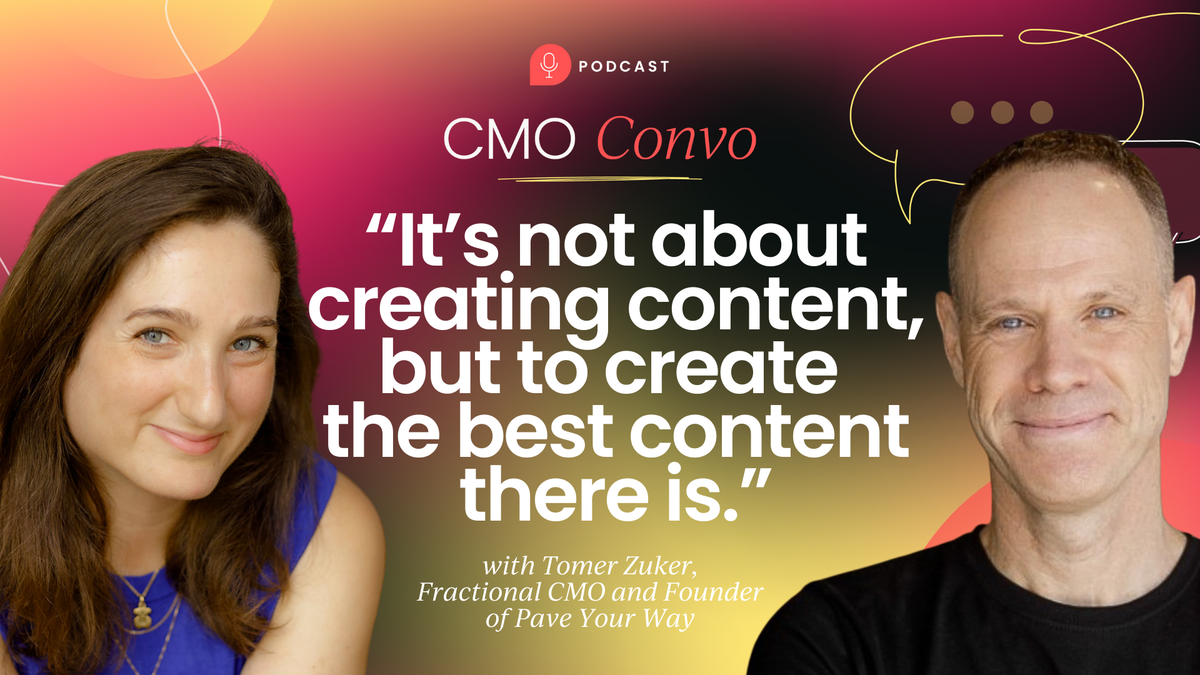
I recommend the 80/20 rule: 80% of the content should be authentically you, with the remaining 20% polished using AI. This approach is especially helpful for team members who feel they aren't strong writers. It gives them a bit of a crutch, makes the process less scary, and helps them build confidence.
Your whole team can drive your thought leadership content
I firmly believe that brand is everyone's job.
When you think about thought leadership, you might picture C-level executives or subject matter experts. But everyone in your organization has a unique perspective and expertise.

A customer success manager has a different lens than the CFO, and they both have a valuable story to tell about the business. By empowering everyone to market the business using their own voice, you generate massive amounts of visibility you don't have to pay for. It also empowers your people, making them feel more connected to the company's story.
Finding the storytellers in your organization
You might be shocked at how many of your team members are secret theater people or love public speaking. Get to know everyone on your team. Your developers might not seem like the obvious choice for a LinkedIn thought leader, but you could be surprised. They may be incredibly passionate and good at storytelling.
Once you identify these individuals, give them the tools to contribute.
This could mean allowing them to write their own perspectives on the company blog or contribute to existing articles. At interVal, we look at marketing, sales, and support as one unified revenue team. We’re all moving the needle towards making a sale, so we all contribute to that story.
Keeping the brand story aligned
What happens when different team members interpret the brand differently?
As long as everyone is pointing in the same general direction, a little variation is a good thing. We all know that even a unified brand will have slightly different tones based on regionality. The same is true at the individual level.
When I tell the brand story one way and our CEO tells it a slightly different way, people realize we’re not scripted robots. We’re actual human beings building a business and solving real problems. That trustworthiness goes a long way.

How to build a successful thought leadership program
You can’t just tell your team to "go run with it." You have to approach this with the idea that you need to set them up for success.
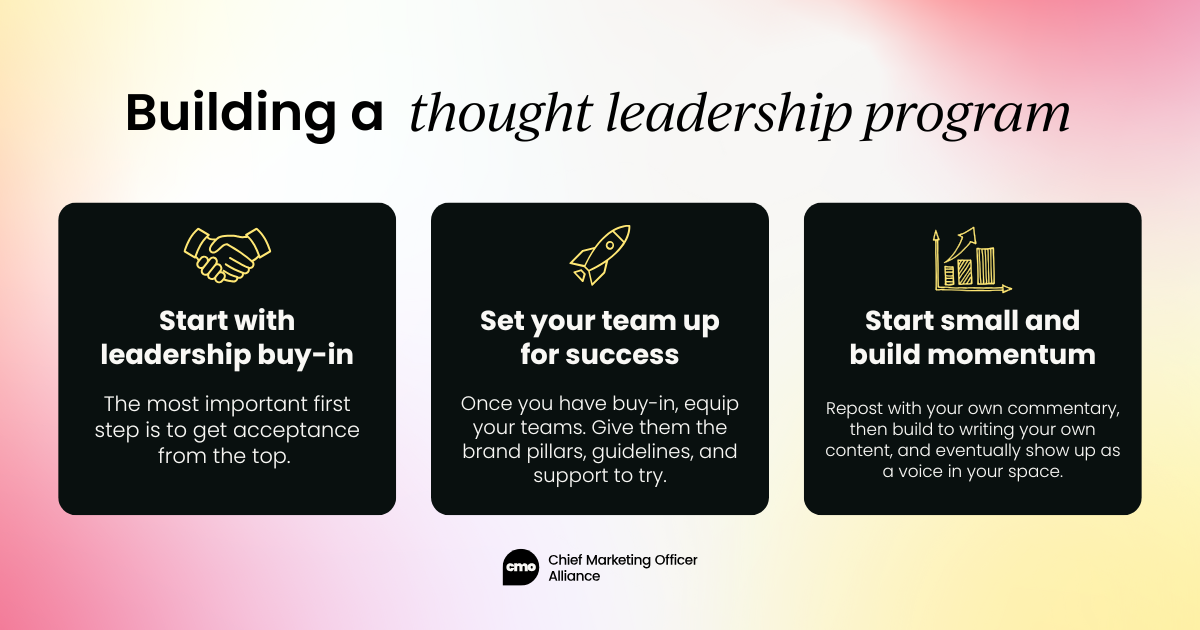
1. Start with leadership buy-in
The most important first step is to get acceptance from the top. If you’re just running this initiative at the BDR level without support from upper management, you won’t feel like you’re moving the needle properly. The marketing and revenue teams are often best poised to lead this, as they stand to gain the most.
2. Set your team up for success
Once you have buy-in, it’s time to educate your team. There are often compliance and regulatory issues to consider, so building a framework is essential.
Here are a few things we did at interVal to prepare our team:
- Host an education session: We walked everyone through our brand pillars, mission, and vision.
- Give the "don't be dumb on the internet" talk: I used to give this talk to every new hire at a previous organization. It’s shocking how many people aren't cognizant of what they say online. Set clear guidelines on what not to do, especially regarding NDAs and trade secrets.
- Provide brand assets: Give your team brand voice documents, graphics to work with, and guidelines on how to use them. A simple rule like, "don't just run off and make stuff in Canva without running it by marketing," can save a lot of headaches.
- Offer help and support: Let your team know you're there to help. At the beginning, it’s very much about holding hands and cheerleading. Offer to proofread their LinkedIn posts. Eventually, you’ll get to a point where you don’t need to, but that initial support is crucial.
3. Start small and build momentum
Encourage your team to just start. Thought leadership is a building block process.
- Step 1: Comment and repost. The easiest first step is to simply repost content from your business and add your own commentary. It’s shocking how many people don’t do this.
- Step 2: Create original content. The next step is to write your own content, tagging the organization to promote your work.
- Step 3: Become a leader in your space. As you build confidence, you can start showing up in spaces where people are looking for speakers or podcast guests.
If you just complete that first step, you're already 99% ahead of most people.
Measuring the impact of your thought leadership marketing
So, how do you know if it's working? The metrics are actually quite simple.
When your team reposts company content, that directly helps the business, and you can track that as an organizational metric. On an individual level, we have the ability to look at our follower and connection counts.
I’ve asked our team at interVal to share two numbers with me each month: their total connections and their follower count. I don’t log into their accounts; it’s a simple self-report. When you see those numbers growing, it means your voice is being heard by more people. Inherently, that means the brand's voice is also being heard by more people. It’s a simple but powerful indicator of growing influence.
Just go try it
My final piece of advice is to just give it a try.
There's nothing to lose. Throw the spaghetti at the wall and see what sticks. You might find that you love telling your story and sharing the expertise you already have.
It’s a great feeling to connect with people authentically, and it’s one of the most powerful ways to build trust and grow your brand. So make a whole pot of pasta and give it a try.
Join our Slack community to get access to top CMOs all over the world, ask your most pressing questions, get inspired by success stories, and so much more.
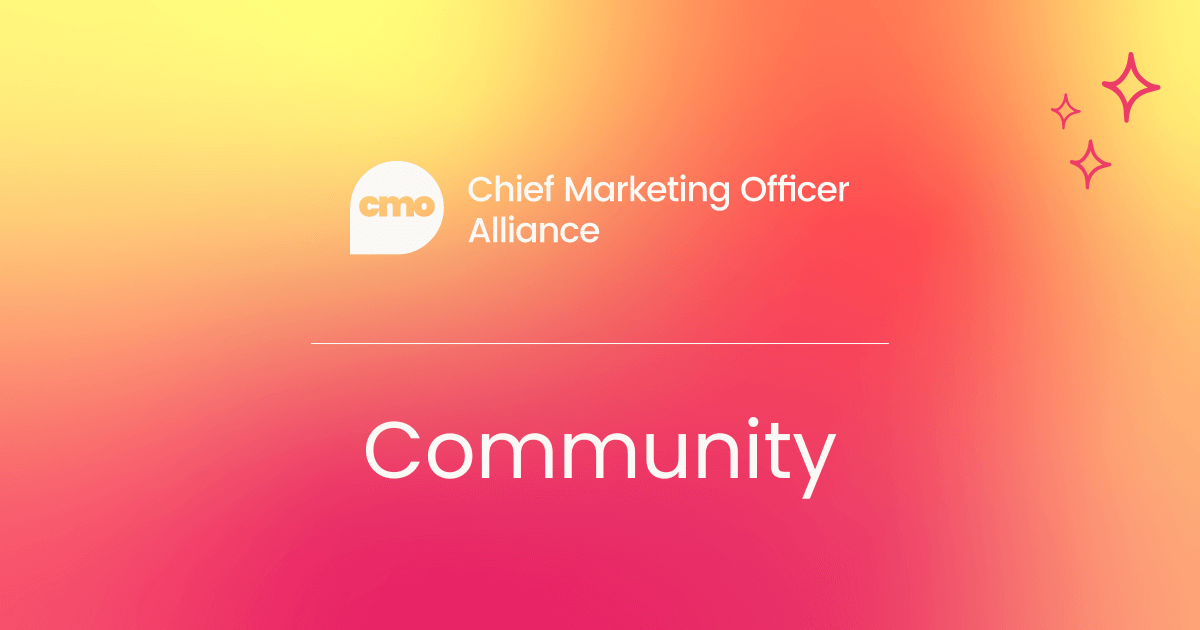






.png)



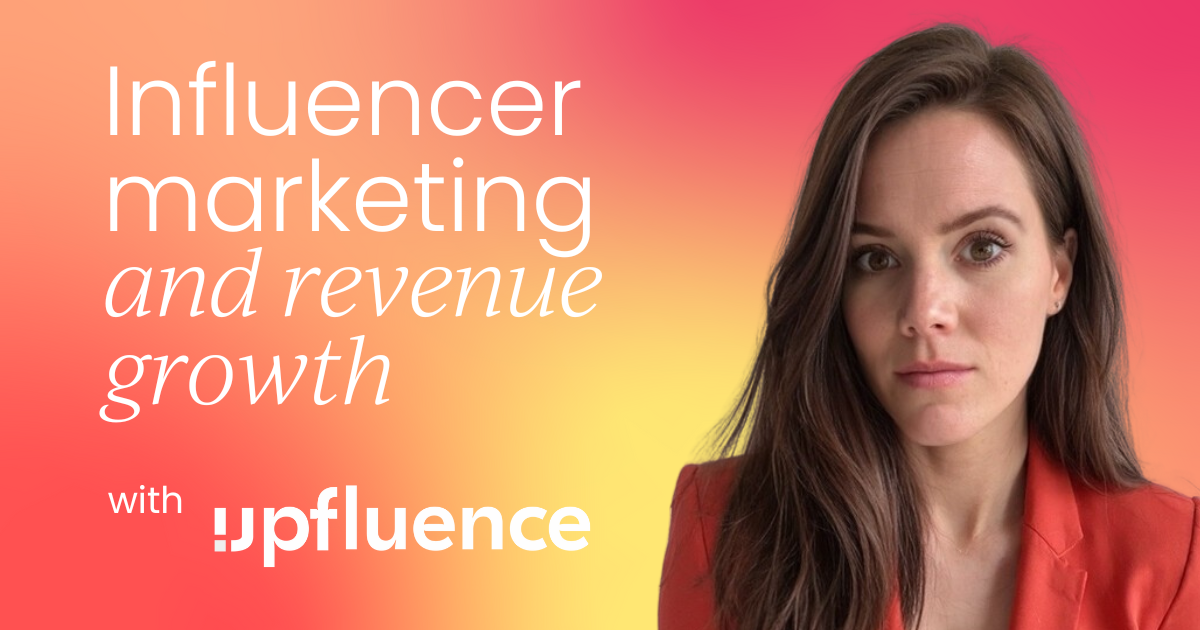





 Follow us on LinkedIn
Follow us on LinkedIn








